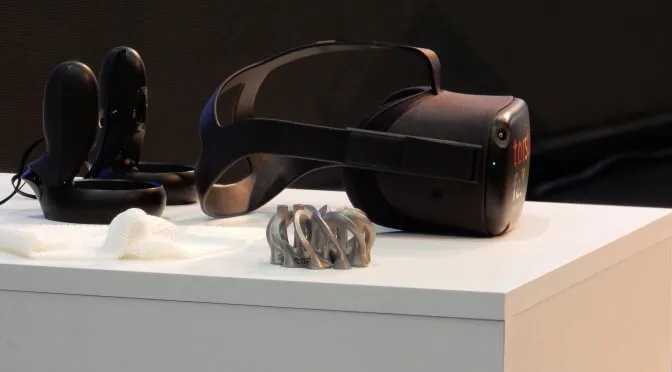There are many applications for AR and VR healthcare technology, from education to therapy and beyond. Augmented reality and virtual reality have been adopted for numerous industrial applications and for entertainment, but they are also working wonders for both patients and healthcare professionals.
The market for AR and VR healthcare hardware and software is growing significantly. Technavio predicts that it will increase by a CAGR of almost 30% between 2019 and 2023, with incremental growth of about $2.5 billion. The Americas will account for half of this growth, as many key AR and VR manufacturers are based there. As AR and VR technology becomes both more sophisticated and more affordable, its adoption will rise over the coming years. So how are VR and AR used in healthcare?
A virtual education
In a field where first-hand experience can be difficult to get, VR and AR are extremely useful educational tools. One of the ways medical students learn is by using cadavers, which may not always be available and do not behave the same way as living bodies. VR allows students to view and interact with a lifelike body and can be used to recreate real scenarios and surgical procedures. Multiple companies are already offering VR training applications that allow students to hone their surgical skills in virtual environments, and these practices already appear to be very successful in preparing surgeons for real life operations.
VR healthcare also makes it easier for students to observe surgical procedures in real time, allowing any number of people to view the skills and techniques being used as if they were present at the surgery. VR cameras enable surgeons to stream operations to the internet, making the experience accessible to medical students in locations around the world.
Suggested reading: VR in Education: How Virtual Reality Has Transformed School Teaching
VR technology is useful for more than just surgical training. It can simulate procedures such as administering medication to a patient, or take a student through an entire scenario where they need to not only treat a patient but obtain important health information and direct assistants. VR allows medical professionals to train for stressful, high-risk situations in the safety of a virtual environment.
AR in the classroom
AR is also a valuable educational tool, and has been shown to increase learning retention and comprehension. The ability to overlay information onto real-world objects or 3D models makes it easier to understand and absorb information, and gives students a better understanding than if they were looking at textbook or computer screen.
New perspectives
Another way that AR and VR healthcare benefits healthcare professionals and patients is by putting doctors and nurses in the shoes of their patients. AR and VR technology can be used to simulate conditions such as poor vision or hearing damage. Not only can this increase empathy towards patients, it can also help practitioners determine how best to assist and treat people with these conditions by providing a better understanding of the situation.
How VR is advancing therapy
There are a wide variety of ways AR and VR healthcare can benefit patients directly as well. A straightforward application is to provide a distraction from stress and pain, whether before, during, or after uncomfortable procedures. Studies have shown that adults and children both benefit from VR technology in these situations, with patients reporting they felt more relaxed and experienced less pain and anxiety. VR is even being used to help with labor pain for people who don’t want to use epidurals. Other studies have found that gastrointestinal, cardiac, neurological, and post-surgical pain can be reduced by using VR as a distraction. This can be especially beneficial to children, for whom hospital experiences can be particularly frightening and difficult to understand.
But VR and AR can be used for much more than just taking the patient’s mind off their discomfort. Therapists can use it to help treat PTSD, phobias, and psychiatric conditions, giving people a safe way to explore challenging situations. VR healthcare is also being used to diminish memory loss, research dementia, and help children and adults with autism. Additionally, it has applications in physical therapy and rehabilitation, helping patients to regain mobility and other functions.
Suggested reading: Top Digital Health Trends Transforming the Global Healthcare Industry
While virtual reality technology has many healthcare applications, it can be bulky and complex to use, requiring not only a headset but also other hardware, and can take some time to learn. Augmented reality may not offer the same immersive experience as VR healthcare, but it still has many medical applications, and can be used with either a simpler headset, or with just a mobile device. Both technologies have their benefits and drawbacks. But regardless of their differences and challenges, it’s clear that AR and VR technology is here to stay.
Learn more about the market for AR and VR healthcare with Technavio’s market research report, including:
- CAGR of the market during the forecast period 2019-2023
- Detailed information on factors that will accelerate the growth of the augmented and virtual reality market in the healthcare industry during the next five years
- Precise estimation of the global augmented and virtual reality market size in the healthcare industry and its contribution to the parent market
- Informed predictions on upcoming trends and changes in consumer behavior
- The growth of the augmented and virtual reality market in the healthcare industry across the Americas, APAC, and EMEA
- A thorough analysis of the market’s competitive landscape and detailed information on several vendors
- Comprehensive details on factors that will challenge the growth of augmented and virtual reality companies in the healthcare industry



